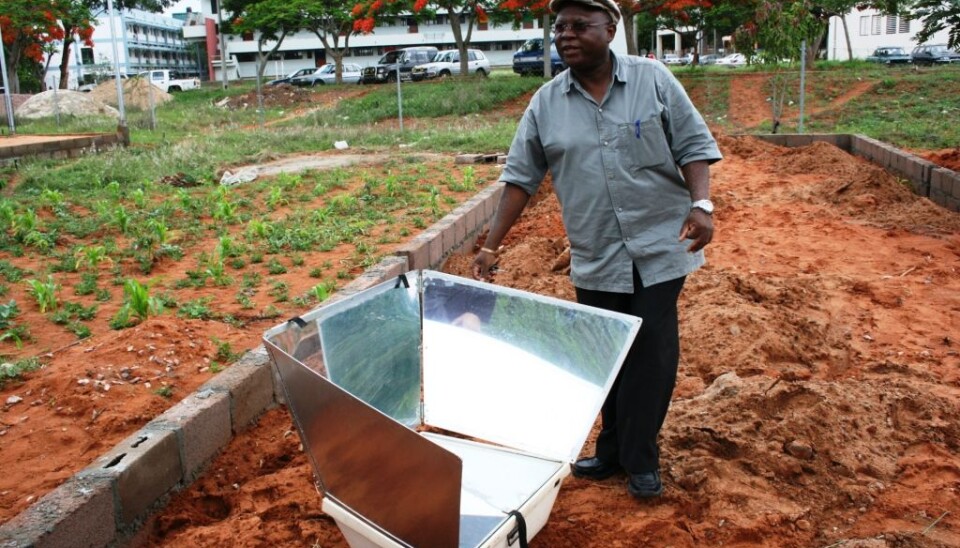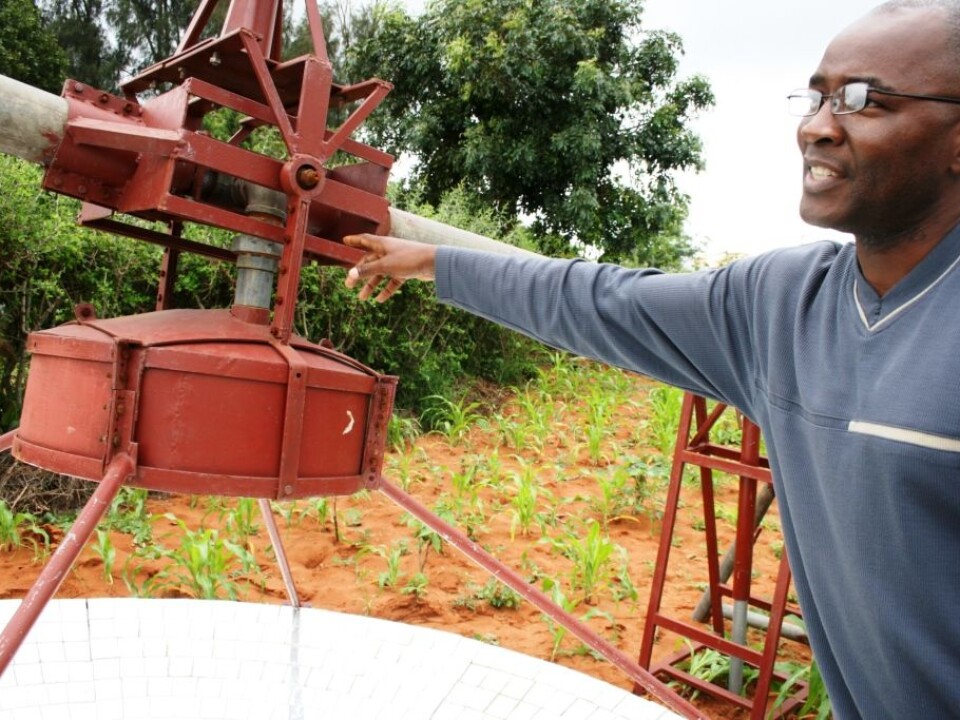This article was produced and financed by Diku - The Norwegian Agency for International Cooperation and Quality Enhancement in Higher Education

Rural Mozambique goes solar
A research collaboration between Mozambique and Norway aims to improve the everyday lives of rural villagers by the use of solar energy.
Denne artikkelen er over ti år gammel og kan inneholde utdatert informasjon.
“If women in the villages didn’t have to walk for four hours a day to collect firewood, but could use a solar oven instead – and if they didn’t have to pump water by hand, but could have an electric pump run by solar energy – then their time could be spent learning to read and write.”
This statement comes from Gilda Monjane, a master student in Sociology at Eduardo Mondlane University (UEM) in Mozambique. She has been writing her thesis in collaboration with students from UEM and the Norwegian University of Science and Technology (NTNU). Her findings will be an important contribution to the project, as they look deeper into the social aspects of modern technology; a necessity in the creation of sustainable future-orientated solutions for developing countries.
As part of the Norwegian funded project “Small Scale Concentrating Solar Energy Systems”, Monjane has been looking at the social aspects linked to solar energy – how people respond to new technology and the impact it has on their lives.
No energy after sunset

One of the major challenges proved to be storing the heat in small-scale appliances developed for households, such as solar cookers – small boxes for cooking food which are heated by sunbeams.
When Monjane introduced the solar box to a group of women to test the level of acceptance of new technology, it was the first time they had ever seen such a device. Most of the women were positive, but quickly identified its inability to operate after sunset, which is when they normally prepare hot meals.
“The solar cookers are good, but the fact that they don’t store the heat is a problem. This is why the researchers are now trying to develop a heat storing hybrid system, making it possible to cook at any time of the day,” explains Dr. Boaventura Chongo Cuamba, who is coordinator of the project at UEM.
Technology for development

In order to understand whether new technologies could be an adequate means of empowerment, Monjane chose to do her field research in the rural areas of Mozambique in off-grid areas where the workload is heavy, especially on women. The introduction of rather simple technology has a potentially major impact here.
“Energy may contribute to development, as it is likely to reduce extreme poverty by expanding the number of factories, employees, social institutions and infrastructure. This in turn could reduce disease as well as maternal and infant mortality. Energy also offers an opportunity for people to take evening classes and reduce illiteracy. There can be no meaningful, successful or durable empowerment without economic empowerment, and there is no freedom if there is no empowerment,” Monjane says.
Electricity giving better school performance
Monjane has also been looking at access to education and the impact of electricity on the learning environment. She compared people in a class of 25 students of alphabetization, of which only seven had electricity in their homes.
The results showed that the best students in the class were the seven who had electricity. She also found that they even had time to teach other people in the community, help their children doing homework, and learn other activities such as handling sewing machines.
Next, she looked into the social impact of electricity in the community. People who were used to walking long distances to get water from a manually driven pump, now have access to a water pump driven by solar energy. Even though some people live far away from the pumping system, their lives have improved. The water is clean, and the spread of disease in the town has been significantly reduced.
Must be produced locally
“In the short term this project will help create a sustainable focus on environmental problems. The long-term impact would be to replace wood, fossil fuels and polluting ways of producing electricity with solar energy,” says the Norwegian coordinator from NTNU, Professor Ole Jørgen Nydal.
But it is essential that the solar device is easy to make and use. NTNU’s most important contribution is research into prototypes for solar energy systems.
“Simplifying the technology is often quite challenging. In addition the devices must be produced locally in case they break down; then repairs are possible because you will have access to available components,” Professor Nydal says.
-------------------------------
This story was originally published in Global Knowledge.






























